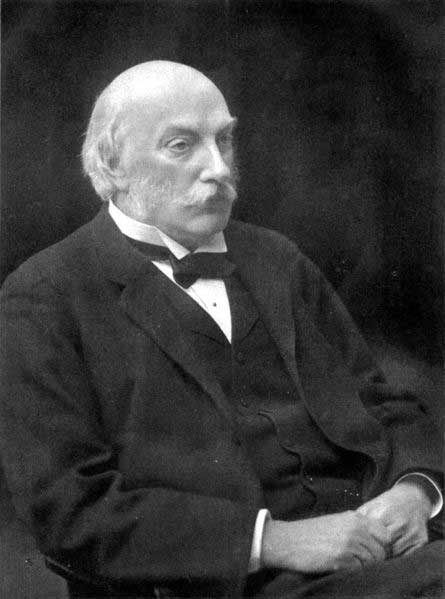.
John Strutt, 3rd Baron Rayleigh


John William Strutt
John William Strutt, 3rd Baron Rayleigh (12 November 1842 30 June 1919) was a British physicist who (with William Ramsay) discovered the element argon, an achievement that earned him the Nobel Prize for Physics in 1904. He also discovered the phenomenon now called Rayleigh scattering and predicted the existence of the surface waves now known as Rayleigh waves.
Biography
Strutt was born in Langford Grove, Essex and in his early years suffered frailty and poor health.
He went to Harrow School and began studying mathematics at Trinity College, Cambridge, in 1861. In 1865, he obatined his BA (Senior Wrangler and 1st Smith's prize) and MA in 1868. He was subsequently elected to a Fellowship of Trinity. He held the post until his marriage to Evelyn Balfour in 1871. He had three sons with her.
In 1873 his father, the 2nd Baron Rayleigh, died, and he inherited the Barony of Rayleigh.
He was the second Cavendish Professor of Physics at the University of Cambridge, following James Clerk Maxwell in this position from 1879 to 1884.
Approximately 1900 Lord Rayleigh Developed the Duplex (combination of two) Theory (Human sound localization using two binaural cues). Interaural time delay (ITD) and interaural level difference (ILD) (assuming a spherical head with no external pinnae). Humans perceive sound objects spatially, using the difference in pitch (frequency/time delay) of the sound and the difference in amplitude (level) between the two ears, in a similar way that stereoscopic sight provides depth perception. Also called two primary cues for azimuth (horzontal location) but possibly its two primary cues for a 3 dimensional bearing. For example when you hear a seagull call out you can determine roughly x y and z location of the sound. Although Pinnae reflections are considered a main cue for vertical localisation.
Lord Rayleigh elected to Fellow of the Royal Society on June 12, 1873 and was elected president of the Royal Society between 1905 and 1908.
Lord Rayleigh died on June 30, 1919 in Witham, Essex.
Craters on Mars and the Moon are named in his honor as well as a type of surface wave known as a Rayleigh wave.
Prizes
- Royal Medal (1882)
- Matteucci Medal (1894)
- Copley Medal (1899)
- Nobel Prize for Physics (1904)
- Rumford Medal (1920)
Related
- Rayleigh criterion
- Rayleigh fading
- Rayleigh number
- Rayleigh quotient
- Rayleigh scattering
- Rayleigh (unit) (named after his son)
- Rayleigh waves
- Rayleigh-Jeans law
- Rayleigh distribution
- Rayleigh-Taylor instability
References and further reading
- Nobel website bio of Rayleigh
- About John William Strutt
- O'Connor, John J., and Edmund F. Robertson. "John Strutt, 3rd Baron Rayleigh". MacTutor History of Mathematics archive.
- Rayleigh Instability of Nanowires - a kinetic Monte Carlo simulation
Retrieved from "http://en.wikipedia.org/"
All text is available under the terms of the GNU Free Documentation License

